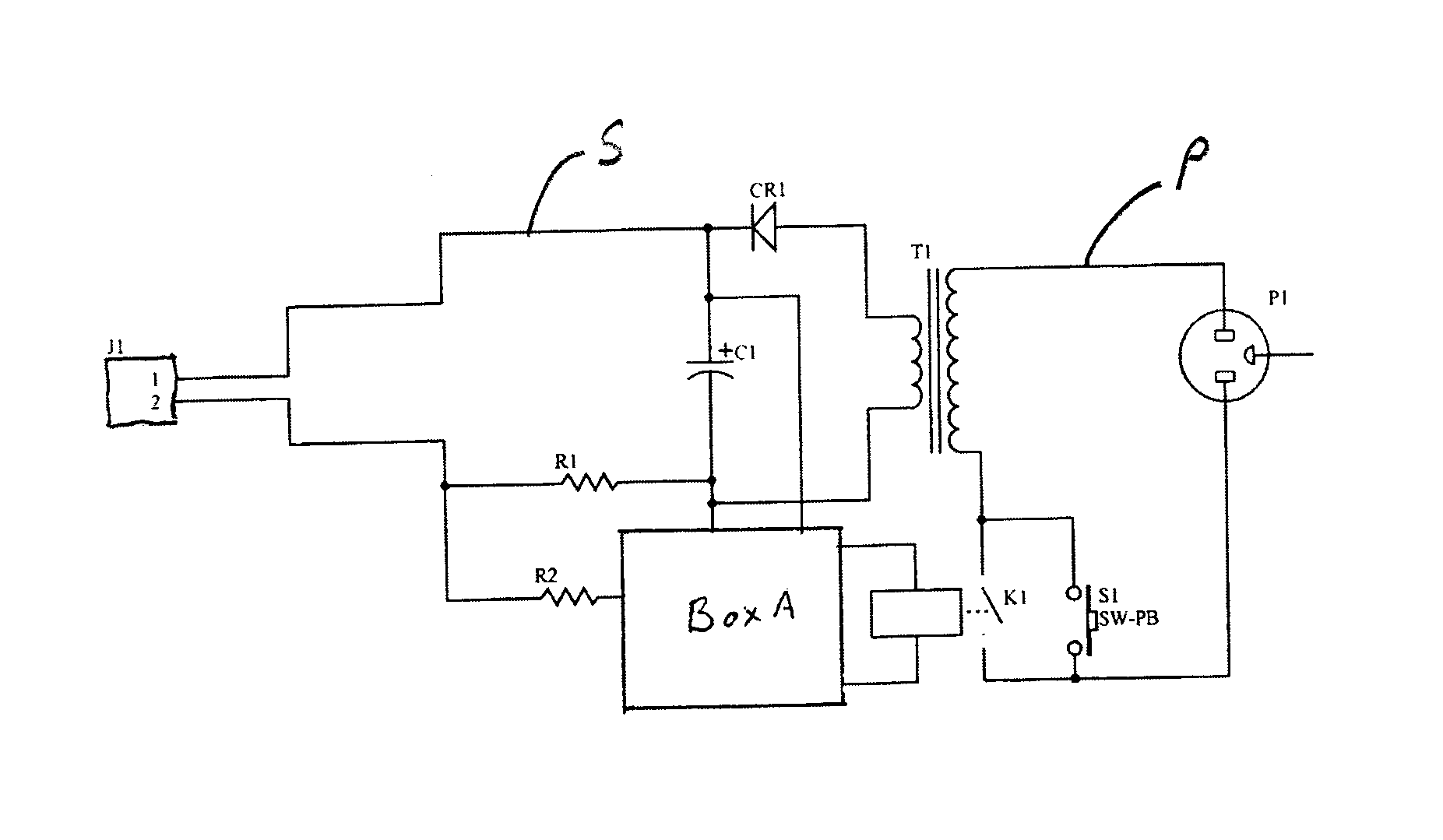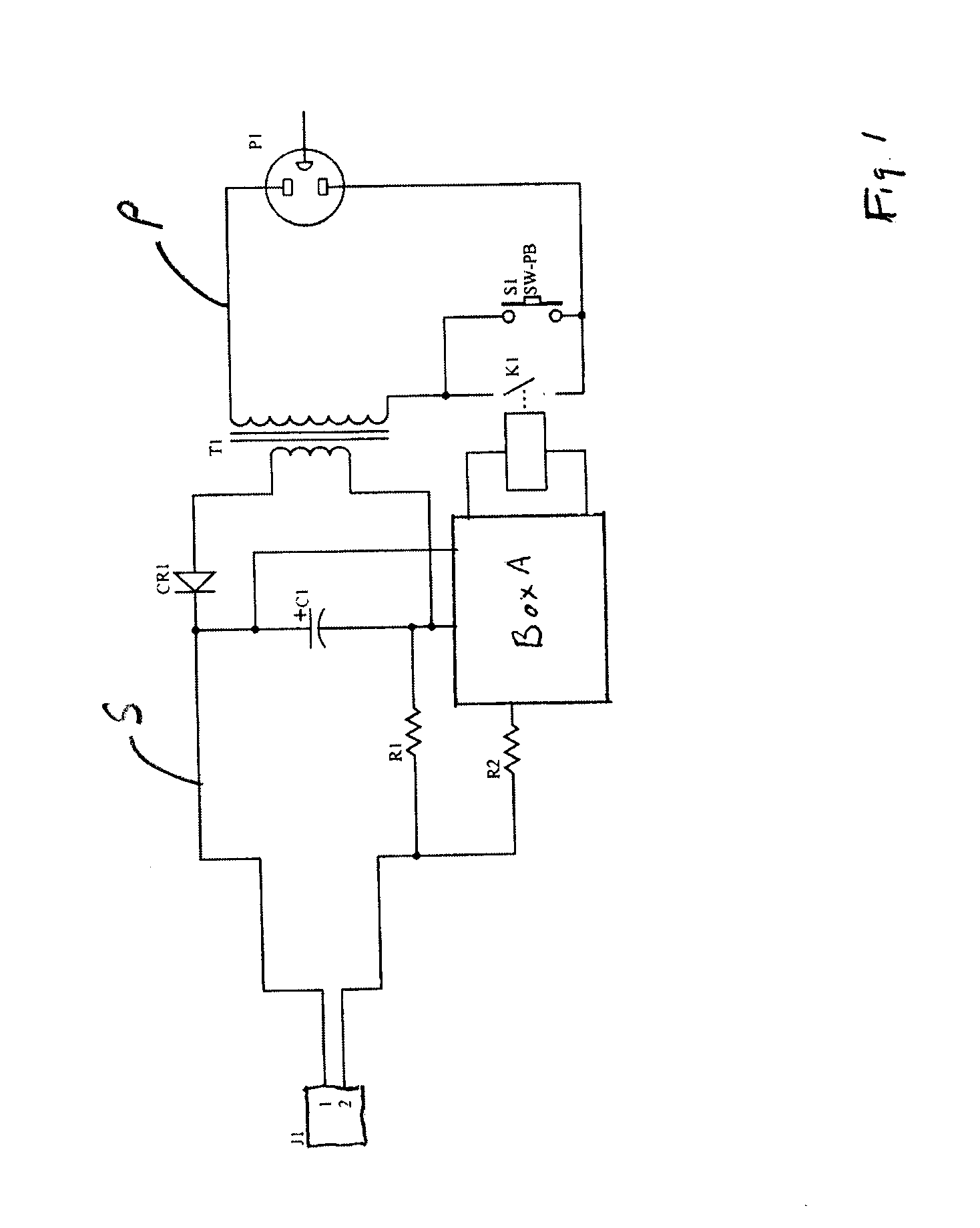Current Sensing Circuit Disconnect Device and Method
a current sensing circuit and disconnect device technology, applied in the direction of emergency power supply arrangements, transportation and packaging, electric vehicles, etc., can solve the problems of wasting electricity and the valuable resources used to generate, unnecessarily waisting power, and wasting billions of kw hours of battery charging devices running in standby and idle modes
- Summary
- Abstract
- Description
- Claims
- Application Information
AI Technical Summary
Benefits of technology
Problems solved by technology
Method used
Image
Examples
Embodiment Construction
:
[0031]Referring now to FIG. 2, as disclosed in this application is a circuit similar to earlier circuits but more robust. CR1 represents a diode bridge to output direct current. The secondary circuit operates on a stepped down voltage from the input voltage on the primary circuit P, as a result of transformer T1. Transformer T1 can also be a switching transformer where there would be a primary circuit P and a secondary circuit S.
[0032]With a load or device to be charged connected to Jack J1 and the primary circuit switch k1 open, a user will need to activate the charging device by pressing switch S1. When current passes through the primary circuit P, a voltage will develop across resistor R1, which is a current sensing resistor of known value. Referring to comparator U1, when the pin 3 voltage is greater than the pin 4 voltage then the output of pin 1 goes high to 8 or 9 volts (in this example, the charger is a 9 volt charger) and this turns low voltage gate, mosfet semiconductor Q...
PUM
 Login to View More
Login to View More Abstract
Description
Claims
Application Information
 Login to View More
Login to View More - R&D
- Intellectual Property
- Life Sciences
- Materials
- Tech Scout
- Unparalleled Data Quality
- Higher Quality Content
- 60% Fewer Hallucinations
Browse by: Latest US Patents, China's latest patents, Technical Efficacy Thesaurus, Application Domain, Technology Topic, Popular Technical Reports.
© 2025 PatSnap. All rights reserved.Legal|Privacy policy|Modern Slavery Act Transparency Statement|Sitemap|About US| Contact US: help@patsnap.com



